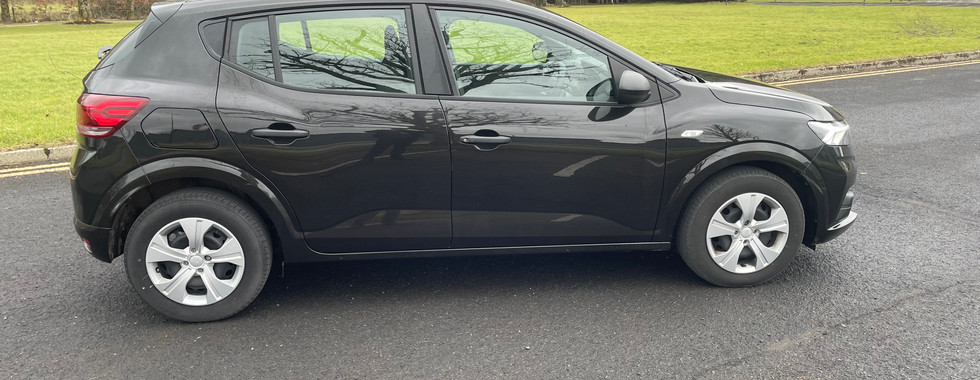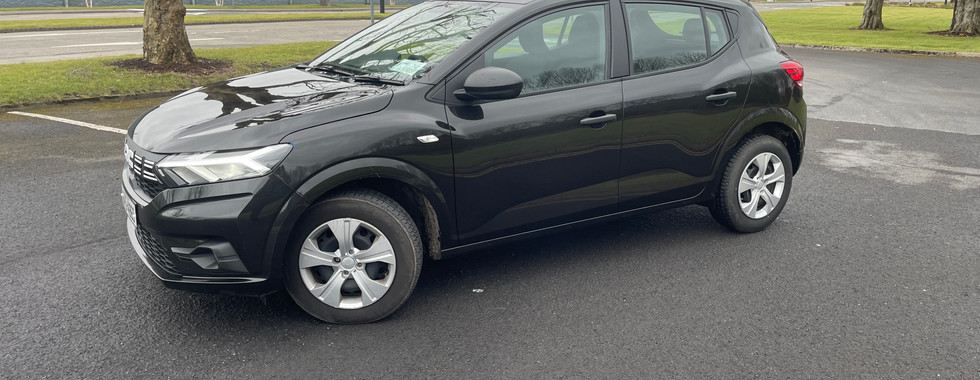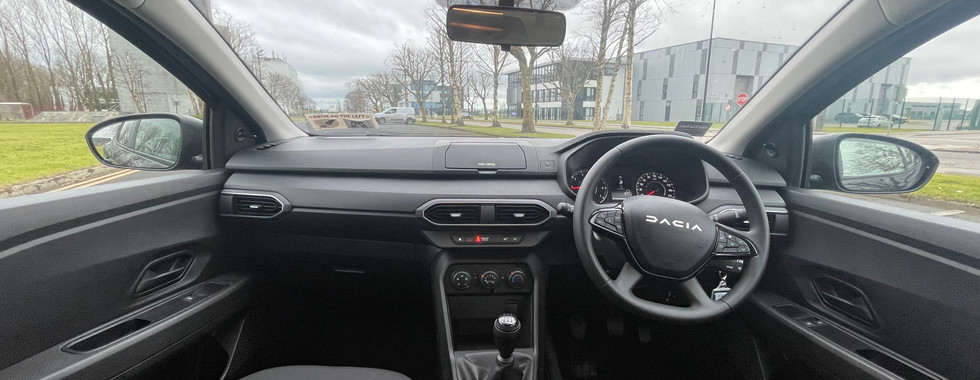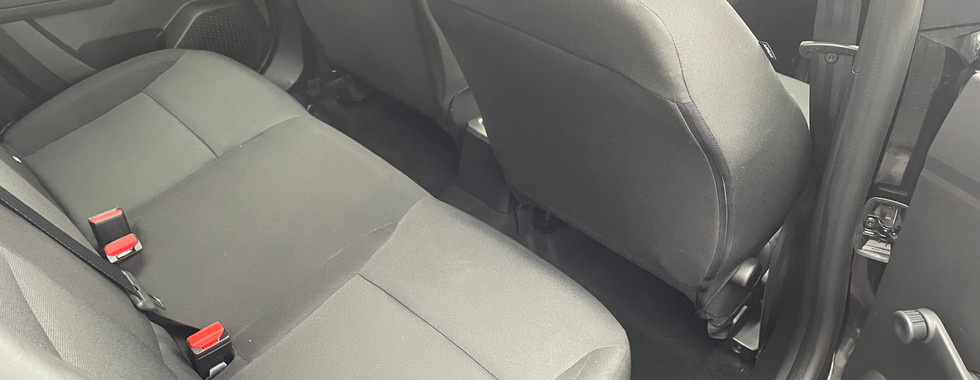Review: Dacia Sandero 90 TCE Essential (2024)
- Ben Higgins

- Mar 2
- 3 min read
The average new car price in Ireland last year was €41,182, the Dacia Sandero starts at €18,240. What do you give up for these massive savings, and more importantly what features do you get to keep?
The Looks
The previous generation Sandero was distinctly cheap looking, especially by the end of its production in 2021. The new Sandero remedies this, looking like a smart little hatchback. It won’t blow anyone away but the Sandero is now able to blend into the world of modern hatch’s instead of sticking out like a sore thumb. However, if you look closer, the first cutting measure can be seen, with this “Essential” trim featuring black plastic door handles. In this “Pearl Black”, it’s hidden well but in brighter colours they stick out.
The Interior
Air conditioning, Bluetooth, cruise control, a USB port and a place to put your phone. What more do you really need? The Sandero manages to offer all these at its sub-€20,000 price point, but how it manages this is a bit complicated. In higher trim Sandero’s, you get an 8-inch display with Apple CarPlay, Android Auto and radio controls, but in this base model, you a have hinged phone holder in its place. This means that your radio and phone connectivity systems are displayed in the screen in the centre of the gauge cluster, being controlled using buttons on the steering wheel. It’s unconventional, but after a while you get used to it, and it has the slight upside of meaning you never have to take your hands off the wheel.
As for the rest of the interior, there is no getting around the amount of hard, brittle feeling plastic that surrounds you. Start poking around and you’ll find manual wing mirror adjusters, no automatic window controls and a hexagonal cup holder that fails to hold any cup properly. The rear passengers don’t even get access to music, with this trim only coming with two speakers, one in each front door. For what it’s worth, the design of said hard plastics is smart and the quality of the steering wheel beats the likes of the base Skoda Fabia or Opel Corsa.
The Drive
Under the bonnet lives a naturally aspirated 1.0 litre three-cylinder that makes 65hp. It’s not much but the Sandero manages to feel surprisingly nippy at lower speeds and never feels dangerously slow unlike the 65hp variant of the Fabia. It’s actually 3.9 seconds faster to 100kph (12.2 seconds) then the equivalent Fabia (16.1 seconds), which is more important then you think when we are talking double digit 0-100kph. The engine is paired to a 5-speed manual that is one of the greatest motoring surprises I’ve had in a while. The more powerful Sandero’s share a 6-speed box with other models in the Renault/Nissan lineup. It’s a rubbish gear box, being springy and uncomfortable to operate and its no different in the 6-speed Sandero’s I have driven. To my amazement this 5-speed seems to share no resemblance to it, instead being a tight, easy to use and positive box with an great clutch. It could be too notchy depending on your preference, but even so it manages to turn what can be a cheap car that is also awful to operate, into just a cheap car. The Sandero is clearly set up for a more comfortable ride then its more expensive Clio sibling. The suspension is softer than said Clio and steering does little to communicate with you. Thankfully, just like the gearbox, the steering and handling don’t feel cheap or nasty, staying out of your way.
If I could sum up the new Sandero, I would do so by comparing it to its predecessor. The old Sandero was a cheap car built cheaply and designed cheaply. The new Sandero is a cheap car built cheaply but designed smartly. It has everything you need and nothing more, and if just a new car to get from A to B for as cheap as possible, look no further. But, if you need anything more then that, or any semblance of luxury, then the Dacia Sandero falls sorely short.


































Comments